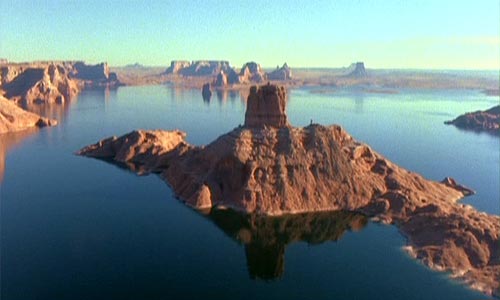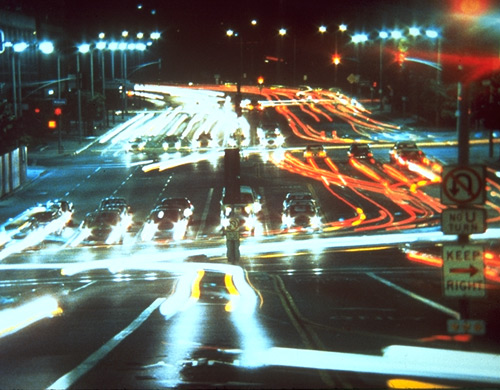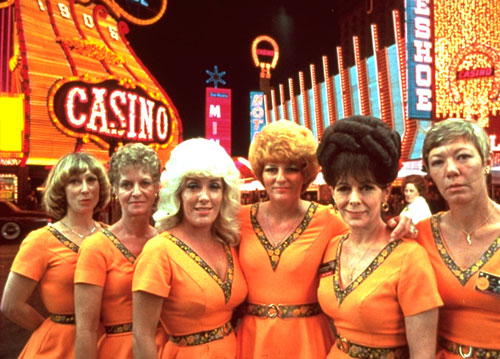Repeat After me… “KOYAANISQATSI”
Koyaanisqatsi (1983). Directed by Godfrey Reggio; music by Philip Glass, cinematography by Ron Fricke. The title, which also serves as theme and plot, comes from the Hopi language and translates roughly as “life out of balance,” “crazy life,” or “life disintegrating.” Void of dialog or characters (other than the human race as a whole), Koyaanisqatsi is pure image and music. Reggio provides vast and stunning scenes of the natural world, equally beautiful human creations of the city and industry, as well as the relentless pace (and cost) of modern life. Striking in its association of unlike objects and scenes, and propelled by Glass’ hypnotic score, Koyaanisqatsi asserts a specific claim and argues powerfully from a particular ideological position.
Where is this film effective in conveying its “emotional” message? How does the film manipulate (though chosen in camera, sound or editing) its audience? How, for instance, is nature portrayed? How is culture portrayed? What does the mise-en-scene suggest? How are individual people represented in Koyaanisqatsi? Where is the camera located? Where is the speed of the film varied and why? What would you say is the tone of the film and how is it established? Look for things like time, perspective, movement, repetition, and sound. How does the music function in the film? Does the music provide support or actually drive the narrative? How?
Koyaanisqatsi as a good example of “associational form,” and editing technique that juxtaposes seemingly unlike things to prove a point. If you believe this film lacks typical narrative organization and subsequently relies upon its audience noticing recurring elements, what are some of those elements? Where do motifs repeat? Where does the grouping of images and/or sound express concepts or even argumentative points?
What are the politics of this film? Is Koyaanisqatsi propaganda? If so, what kind and what makes it so?
In response to our viewing of Koyaanisqatsi, please offer a two part/paragraph blog post:
Part One: Provide your gut reaction. Say how the film made you feel. Were you moved? Irritated? Disgusted? Go ahead and vent if you want. Would you recommend this film? Why?
Part Two: Delineate the argument, thesis, or point of the film. Be as objective and as different from your personal tone in Part One as you can. How is the argument advanced? Detail some formal choices you noticed and analyze the manipulation of the viewer. How, exactly, is the argument made? Think of your task as explaining what goes on behind the magic curtain to those in the audience who see only the show and are unaware of the manipulation. What is nature, or the state of nature, according to Koyaanisqatsi, and how is this portrait achieved cinematically?
And maybe this: Can art help us save the world?
For reference, here are translations of the Hopi Prophecies sung in the film:
“If we dig precious things from the land, we will invite disaster.”
“Near the day of Purification, there will be cobwebs spun back and forth in the sky.”
“A container of ashes might one day be thrown from the sky, which could burn the land and boil the oceans.”



